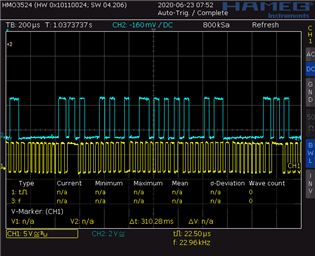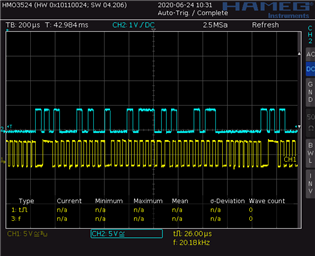Other Parts Discussed in Thread: PGA300
Hi,
I am trying to read via I2C some register but I can't understand why, probably because I transmit the wrong address.
For example, I wish to read:
PADC_GAIN_MSB with DI page and offset = NA and address 0x40000046
I2CADDR = 0 so the slave address is 0x40.
So I have to trasmit the slave address (0x40) the register address (0x46) then again the slave address, is it correct?
If DI Page is not NA i have to sum the slave address?
if DI Offset is not NA?
Thank you in advance.





